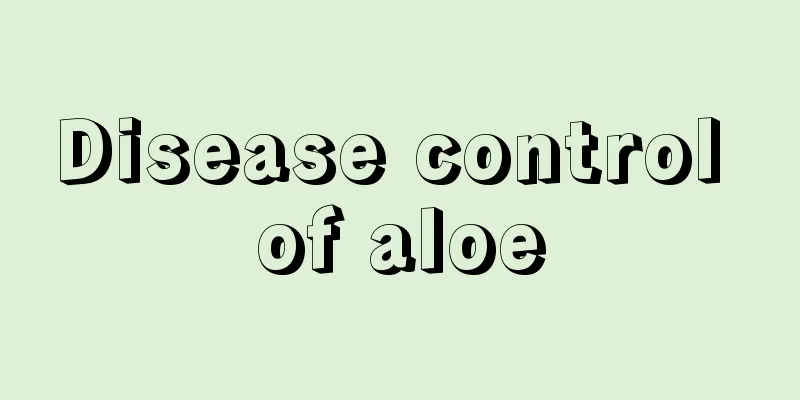Disease control of aloe

RustRust is one of the most common diseases of aloe vera, and it often occurs in the summer when the temperature is high and the humidity is high. The pathogen is spread through spores and overwinters with the diseased plants on the surface of the soil. The spores grow under the epidermis and turn dark brown when they rupture. Prevention and treatment methodsIt requires careful care and observation. If disease occurs, remove the diseased and damaged leaves of aloe vera in time and burn them. Brown spotIn the early stages of aloe brown spot disease, many dark green water-soaked spots will appear on the leaves, and as the disease progresses, the spots will gradually expand and become round. In the later stage of the disease, many black particles will appear on the lesions. The more severe the disease is, the more particles there are, and in severe cases it can cause the entire pot of aloe to rot. Prevention and treatment methods1. Plant disease-resistant varieties. 2. Strengthen the management and care of potted plants, pay attention to appropriate room temperature, maintain ventilation, and apply fertilizer evenly. 3. Pay more attention to the potted plants. If you find diseased leaves, remove them immediately and destroy them. 4. When disease occurs, spray 1000 times liquid of 75% thiophanate-methyl powder. Spray once every 2-3 weeks, and 3-4 times within a year. Leaf blightLeaf blight mostly occurs in the southern region and is spread through water or insects. The symptoms include small dark brown spots on the tip of the leaves, which gradually expand and dry up. The spots shrink and later form small black spots in an array. Prevention and treatment methods1. Pay attention to observation and prevent the spread of diseases 2. When planting, choose varieties with strong disease resistance, such as Chinese aloe, Curacao, etc. 3. Aloe vera is not cold-resistant, so pay attention to the combination of fertilizer and water to enhance its disease resistance. 4. Use potted plant pesticides for prevention and control (600 times solution of 75% thiophanate-methyl wettable powder). |
<<: Diseases and prevention methods of air plants
>>: Diseases and prevention methods of the Chinese lucky charm
Recommend
The efficacy and function of Crinum serrata (medicinal value)
The efficacy and function of Wenshulan effect sou...
How to grow the succulent rain heart
1. Light and temperature Because it prefers sunsh...
How much is the yield of purple garlic per mu?
Purple garlic yield per mu Purple garlic is a typ...
Cultivation methods and precautions of fragrant wood
1. Breeding methods 1. Light: Its native place is...
What flowers are suitable for the living room?
1. Aloe Vera Aloe vera's purification ability...
Is it okay not to change the soil when the money tree roots are rotten?
1. Is it possible not to change the soil? If the ...
How to prune the rubber tree to make it look better when it grows up
When pruning a rubber tree, the cut should be as ...
Identification and prevention of Botrytis cinerea
Cattleya gray mold symptoms The virus occurs on C...
How to grow passion fruit to make it bloom and bear fruit? How many times a year does passion fruit in the south bear fruit?
1. Maintenance skills 1. Even light: When growing...
How to propagate Monstera by cuttings?
Monstera is a popular houseplant known for its un...
Ice Cream Tulip
Ice Cream Tulip The Ice Cream Tulip is a new and ...
How to plant rose seedlings
1. Prepare the soil Choosing good pots and soil c...
Is dianthus a shade or sun-loving plant?
Does Dianthus prefer shade or sun? Dianthus is al...
How to save seeds of hibiscus
How to get hibiscus seeds Hibiscus is also known ...
How to grow purple mirror succulents and how long does it take for purple mirror potted plants to bloom
Purple mirror succulent is a perennial succulent ...









